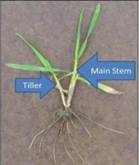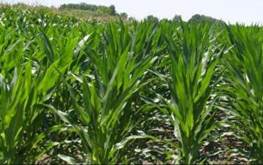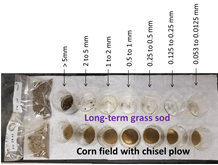Good evening,
Spring is here even though the weather might not agree with the date. Each spring the Dairy Service Unit holds their semi-annual cheese sale. The spring sale has a variety of cheeses to choose from including Colby, Muenster, Smoked Cheddar, Mozzarella, Marble, American Processed, Farmers Cheese, Cheddar, Big Eye Swiss, Baby Swiss, Lacey Swiss (low cholesterol, low fat), Hot Pepper, and also Trail Bologna. Order forms can be obtained at the Extension Office, 1021 W. Lima Street, Suite 103 in Kenton or online at hardin.osu.edu. The deadline for ordering cheese is April 4, with pick-up dates April 13 from 12:00 pm to 7:00 pm or April 14 from 9:00 am until 12:00 pm at Dan and Molly Wagner’s dairy farm. Funds from the semi-annual cheese sale are used to support dairy youth activities such as scholarships, royalty, awards, and other activities planned by the Dairy Service Unit. For a complete list of items and prices, see the attached news release and order form.
Do you raise livestock and are looking for a way to dispose of dead animals? One legal method in Ohio is Livestock Mortality Composting, but it requires certification. In order to get certified, you must attend either a workshop put on by OSU Extension or do an online training. Hardin County Extension will be hosting a Livestock Mortality Composting workshop on Wednesday, March 28 from 1:00-4:00 pm at the Extension office. Pre-registration is required as mentioned in last week’s newsletter, so go to https://hardin.osu.edu/news/livestock-mortality-composting-workshop to register online or call the office by Tuesday at 419-674-2297 to register. There is a $10 registration fee to cover manuals and refreshments, so please let us know if you are planning to attend. I have attached the flyer to this email as well if you need further information.
Although we had our Hardin County Pesticide and Fertilizer Recertification program on March 13 at the Plaza Inn, there may still be applicators out there that missed the training or have specialty categories on their license. If you are one of these people, we will be having a Make-up/Specialty Pesticide and Fertilizer Recertification training at the Hardin County Extension office on Friday, March 30. We will be starting at 9:00 am with fertilizer, and then carry on with pesticides at 10:00 am. Go to http://www.cvent.com/events/march-30-2018-hardin-county-specialty-make-up-pat-fact-recertification/event-summary-98e45558a1b945f0a824d9d80d1c3b79.aspx if you plan to attend, or call our office to let us know which categories you still need certification training by Thursday if you haven’t already pre-registered. As there was an increase in the number of pesticide complaints in 2017, the Ohio Department of Agriculture has outlined the process with a handout. I have attached the Pesticide Complaint Handout to this email so you are aware of the process in case you are ever on either end of a pesticide complaint.
I have included flyers for upcoming programs in the area and around the state that you may be interested that include Weed Identification and Management in the Home Garden and Landscape on April 26 in Wapakoneta; East Ohio Women in Agriculture Conference on April 6 in Massillon; and also the 2018 Northeast Ohio Small Farm Conference and Trade Show on April 7 also in Massillon. Yes, I know Hardin County is not in eastern Ohio, but there are not equivalent conferences being held in western Ohio this year as of this point in time. Make sure you call the phone numbers on the flyers if you are interested in attending either of these two events. Finally, when campers, counselors, instructors and camp directors make their way to Ohio FFA Camp Muskingum the second week of June this year, their beloved Ohio Forestry & Wildlife Conservation Camp will have a new name and corresponding brand that pays homage to its inception in 1950, and its growth and success since then. Read more about ‘Camp Canopy’ in the attached news release if you have a high schooler who may be interested in attending this summer. Other local events happening this week include the Beef Banquet Saturday (3/24) starting at 6:00 pm in the Community Building at the fairgrounds, Master Gardener Volunteers meeting, Monday (3/26) starting at 7:00 pm at Harco Industries, and Farm Succession – Part 2 dinner and program sponsored by Ag Credit, Tuesday (3/27) starting at 6:00 pm at the Masters Building on the Wyandot County Fairgrounds in Upper Sandusky, As usual, see below for agronomy articles.
- Weed ID Management Flyer
- East Ohio Women in Ag Brochure
- Small Farm Conference Brochure
- Camp Canopy Discover Forestry Wildlife News Release
Mark
Deciphering preplant dicamba labels and tank mixtures – Mark Loux
Dicamba can have a good fit in spring preplant burndown programs, especially for control of overwintered marestail in fields not treated the previous fall. We typically recommend a preplant burndown that includes at least two herbicides with substantial activity on marestail in this situation, such as Sharpen + 2,4-D or Gramoxone + 2,4-D + metribuzin. Dicamba is the most effective burndown herbicide on glyphosate-resistant marestail in the spring though, and in our research has usually killed or at least stopped emerged marestail in their tracks without help from other herbicides. To read more about using dicamba preplant, go tohttps://agcrops.osu.edu/newsletter/corn-newsletter/2018-5/deciphering-preplant-dicamba-labels-and-tank-mixtures.
Winter Wheat Stand Evaluation – Laura Lindsey, Ed Lentz
Feekes 5 growth stage (leaf sheaths strongly erect) is a good time to evaluate winter wheat stand. Over the past two years, with funding from the Ohio Small Grains Marketing Program, we evaluated the relationship between wheat stems (main stem + tillers) and yield. Keep in mind that In our research, we counted the number of wheat stems which included both the main stem (main plant) and tillers. Make sure to count the number of stems in several areas of the field. In our research, stem counts at Feekes 5 growth stage predicted wheat yield better than stem counts at Feekes 6 growth stage (first node visible). Go to https://agcrops.osu.edu/newsletter/corn-newsletter/2018-06/winter-wheat-stand-evaluation to learn more about evaluating winter wheat stands.
Proven Production Practices for Increasing Corn Yields and Profits – Peter Thomison, Steve Culman
In the quest for high corn yields, considerable attention has been given to increasing various inputs, including seeding rates and fertilizers, narrowing row spacing, and making preventative applications of foliar fungicides, growth regulators and biological stimulants. However, the significant drop in crop net returns that’s occurred in recent years warrants developing strategies to lower input costs. An input that might have paid for itself with $5.50/bu corn may not at $3.75/bu corn. A practical and economic approach to achieving high yields is to follow proven cultural practices that enhance corn performance. To read more practices to increase corn yields and profits, click on https://agcrops.osu.edu/newsletter/corn-newsletter/2018-06/proven-production-practices-increasing-corn-yields-and-profits.
Spring Seeding of Forages – Mark Sulc
Late this month (depending on the weather) and on into April provides one of the two preferred times to seed perennial cool-season forages. The other preferred timing for cool-season grasses and legumes is in late summer, primarily the month of August here in Ohio. The relative success of spring vs. summer seeding of forages is greatly affected by the prevailing weather conditions, and so growers have success and failures with each option. Probably the two primary difficulties with spring plantings are finding a good window of opportunity when soils are dry enough before it gets too late, and managing weed infestations that are usually more difficult with spring plantings. To finish reading about spring seeding of forages, go to https://agcrops.osu.edu/newsletter/corn-newsletter/2018-06/spring-seeding-forages.
Nitrogen Rate Recommendations for Wheat – 2018 – Ed Lentz, Laura Lindsey, Steve Culman
Wheat has already reached green-up across the state so spring N may be applied anytime fields are fit. Keep in mind that research has shown no yield reduction for N applications before Feekes GS 7 (two visible nodes). However, wheat is growing slow because of the cool temperatures. Nitrogen applied early has the potential to be lost since wheat will use little N until after jointing. Urea-ammonium nitrate (UAN) or 28% has the greatest potential for loss and ammonium sulfate the least. Urea will have little potential for loss as long as it does not volatize. No stabilizer will protect the nitrate component of UAN, which is roughly 25% of the total N in UAN at application time. Go to https://agcrops.osu.edu/newsletter/corn-newsletter/2018-06/nitrogen-rate-recommendations-wheat-2018 to finish reading this article.
Mark A. Badertscher
Agriculture and Natural Resources Educator
OSU Extension Hardin County
1021 W. Lima Street, Suite 103, Kenton, OH 43326
419-674-2297 Office
hardin.osu.edu























